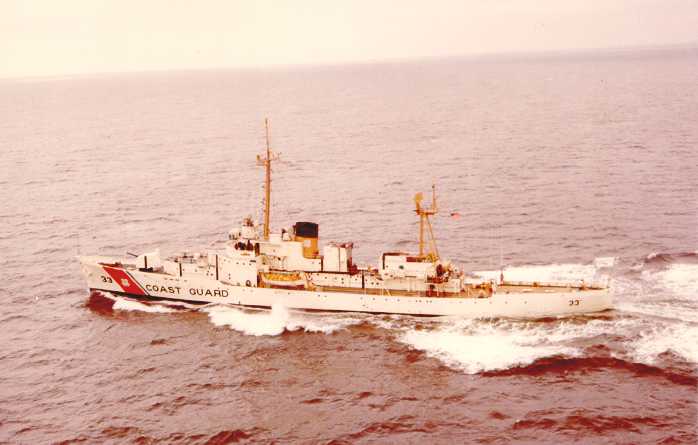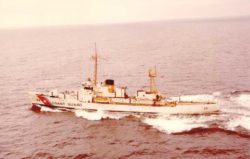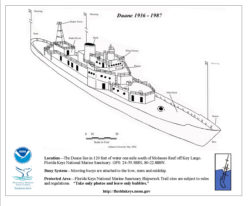
The U.S. Coast Guard Cutter Duane: A Historic Ship and Artificial Reef
An estimated 1,000 shipwrecks lie in the sandy shallows near the Florida Keys, each with its own story to tell. One such wreck is that of the Duane, a U.S. Coast Guard cutter built in 1936. The Duane was sunk in 1987 by the Keys Association of Dive Operators who received the decommissioned ship as a donation for use as the foundation for an artificial reef off the coast of Key Largo.
Duane’s History
Duane was built at the U.S. Navy Yard in Philadelphia and was one of seven Treasury Class cutters, which were all named after Secretaries of the Treasury. The Duane was named after William John Duane, Secretary of the Treasury in 1833 under President Andrew Jackson. Each of the 327-foot long cutters were designed to meet the changing needs and missions of the service as the U.S. left the Prohibition Era. The U.S. Coast Guard believed that cutter-based aircraft would be essential for future high-seas search and rescue work and designed these seven ships with those goals in mind.
The Duane spent most of her time with the U.S. Atlantic Fleet, playing an important role in U.S. history and modern maritime history. She traveled the ocean with stops in places like Hawai’i and Iceland on various mission. In the Duane’s history, she has two notable moments. The first is in the winter of 1942-43 where she sank the German U-Boat, U-77, in partnership with her sister ship, the Spencer. Duane rescued nearly 350 survivors from torpedoed convoy ships across four missions. The other notable voyage was in 1980 when Duane served as a rescue vessel for thousands of Cuban refugees seeking asylum in the United States.
The Duane had an impressive life of nearly 50 years, conducting her final missions on April 24, 1984 and March of 1985. Her last-remaining sister ship, the Campbell, was decommissioned in 1982, leaving the Duane as the oldest cutter on active duty in the military at the time. On the 1984 voyage, she towed the disabled sailboat, Sandpiper, which was stranded nearly 400 miles from Montauk Point back to safety. In 1985, she medevacked a crewman from the Greek merchant vessel Buena Vista, which was nearly 400 miles off the coast of Cape Cod.
Duane’s Modern Role
On August 1, 1985, the U.S. Coast Guard decommissioned the Duane and donated her to the Keys Association of Dive Operators. The ship was to be intentionally sunk and used to form the foundation of an artificial reef off the coast of Key Largo. The ship officially sank two years later on November 27, 1987. Florida Keys National Marine Sanctuary was and remains the only sanctuary in the National Marine Sanctuary System that allows artificial reefs within its boundaries. Duane lies upright one mile south of the easily accessible Molasses Reef, with her hull and original rudders, screws, railings, ladders, and ports still intact. On days where underwater visibility is good, divers can see all of the ship’s equipment along with reef fish and other local species that have built their homes along the ship’s hull over the years.
She is part of the sanctuary’s famous Shipwreck Trail – an underwater trail of nine historic shipwrecks along the coast of the Florida Keys. Florida Keys National Marine Sanctuary encourages visitors and locals to explore the Trail with an underwater guide associated with each wreck to learn about the history of the shipwrecks, their buoy positions, and site information like depth and notable species. In addition to receiving protections within the sanctuary, the Duane is listed on the National Register of Historic Places.
While the Duane no longer serves as a U.S. Coast Guard vessel, she remains important to our nation. As part of a popular Keys dive site, she supports a rich ecosystem and connects visitors from all over the world to the wonders that call Florida Keys home. The Duane has been the site for many marine debris cleanup dives including one by Rainbow Reef Dive Center in September of 2020 as part of the Foundation’s Goal: Clean Seas Florida Keys program.


